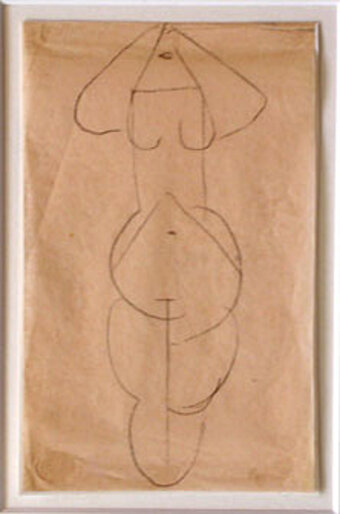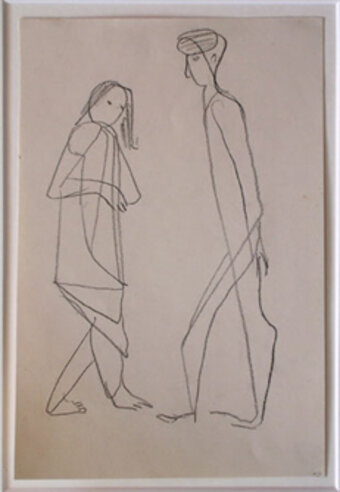Kurt Lehmann
2008: The drawing as built sculpture
The interplay between the fleetingly suggested sketch and the surface of the sculpture, which suggests vibrations, sheds an illuminating light on Lehmann's early creative years and his first successes as a sculptor. Just as Lehmann assembled his figures geometrically in the drawings of the fifties and sixties, he formed and combined the elements of movement in his sculptures. It is interesting to note that he did not forget the "impressionistic style" that inspired him in Rodin's work. Nervous and sometimes shimmering contours appear in many drawings, even those from the 1970s. He transferred this to the surface treatment of his figures, which appear scaly and ribbed. This increases the dynamic effect, so that even resting positions radiate movement.

In a report, Lehmann wrote immediately after his visit to Maillol in 1929: "Plastique c'est architecture, says Maillol, takes a piece of chalk, draws geometric shapes on the wooden wall, triangle, circle, ellipse, into which he now builds his composition."


If you walk through the long gallery of Lehmann's drawings, you can still trace the echoes of his extraordinary art experience before Rodin's works in 1929.

